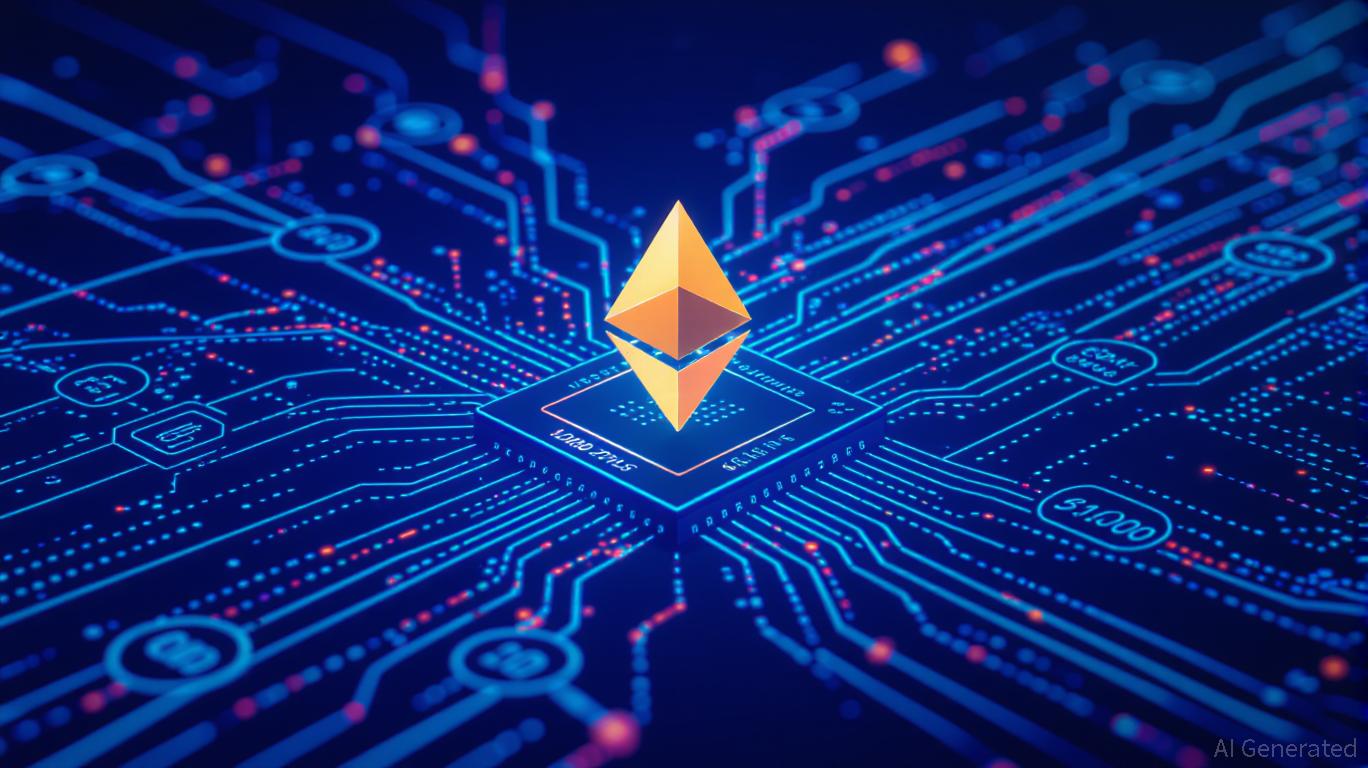AIOZ Transforms Residences into Decentralized Web3 Internet Centers
- AIOZ Network, a blockchain-agnostic DePIN platform, aims to democratize AI compute, storage, and streaming via peer-to-peer networks, positioning itself as a Web3 infrastructure cornerstone. - The platform integrates AI compute, S3-compatible storage, and low-latency streaming, rewarding users with tokens for contributing idle hardware while enabling creators to monetize content without intermediaries. - AIOZ's tokenomics prioritize real-world usage (e.g., AI tasks, storage) over speculation, fostering a
AIOZ Network, a decentralized physical infrastructure network (DePIN) platform that operates across multiple blockchains, is establishing itself as a foundational player in the evolution of Web3 infrastructure. By utilizing peer-to-peer technology, AIOZ aims to make AI computing, storage, and streaming services more accessible to everyone. In an exclusive
The heart of AIOZ’s plan is a unified platform that brings together AI computing (AIOZ AI), S3-compatible storage (AIOZ Storage), and fast streaming (AIOZ Stream), all supported by DePIN-based incentives. Participants can receive token rewards for sharing unused hardware, while developers and content creators are given tools to earn from their work without relying on middlemen, according to BeInCrypto. For example, AIOZ Stream enables subscription (SVOD), pay-per-view (TVOD), and ad-supported (AVOD) formats, with on-chain revenue sharing for transparency, as noted in the Yahoo profile. Tjiputra highlighted that the platform is designed for ease of use, allowing viewers to access content without a crypto wallet, a feature intended to encourage mainstream use, BeInCrypto reported.

The project’s tokenomics are built to reinforce its community-first philosophy. Unlike speculative DePIN models, AIOZ links rewards to actual usage, such as AI processing, data storage, and streaming. As more people use the network, rewards increase, creating a positive feedback loop that encourages further involvement, BeInCrypto explained. This stands in contrast to PRDT’s recent token launch, which gives 80% of platform revenue to stakers but is based on cross-chain trading rather than contributions to physical infrastructure, according to a
AIOZ’s governance model reflects broader trends in DePIN, as mentioned in a
On the technical side, AIOZ is advancing rapidly. The latest updates, such as DePIN App v4, now offer AI computing and transcoding, while the Hardfork v1.7.1 blockchain upgrade has improved both security and scalability,
Despite positive developments, there are still hurdles. The token’s price has been volatile—rising 75% in the past 90 days but dropping 45% since the start of the year—mirroring general uncertainty in the crypto market, CoinMarketCap observed. Nevertheless, Tjiputra remains committed to practical use cases, stating, "Watch-to-earn is a tactic. The bigger step is build-to-earn," where users are rewarded for hosting applications, moderating content, or running AI models, as he told Yahoo.
As Web3 infrastructure continues to develop, AIOZ’s focus on decentralized, user-owned networks could transform how people engage with AI and digital media. While major companies like Amazon are investing heavily in centralized AI systems, as discussed in a
Disclaimer: The content of this article solely reflects the author's opinion and does not represent the platform in any capacity. This article is not intended to serve as a reference for making investment decisions.
You may also like
Bitcoin News Update: Bitcoin’s Drop to $100k Highlights Short-Term Anxiety Versus Enduring Confidence from Institutions
- Bitcoin fell below $100,000 in Nov 2025 amid geopolitical tensions and profit-taking, wiping $1.3B in crypto liquidations. - Technical indicators showed bearish momentum, with whales selling 38.4k BTC while retail traders bought 415 BTC. - Michael Saylor predicted $150k BTC by year-end, citing institutional adoption, as investors shifted to altcoins like AlphaPepe. - Miners like MARA doubled Bitcoin reserves in Q3, but stocks dipped amid macroeconomic uncertainties and volatile price swings.

Vitalik Buterin Backs ZKsync: Driving Layer 2 Expansion and Unlocking Investment Opportunities
- Vitalik Buterin's endorsement of ZKsync's Atlas upgrade validates its technical innovation, boosting institutional interest and investor confidence. - The upgrade enables direct Ethereum liquidity access, achieving 15,000+ TPS and near-zero fees, positioning ZKsync as a key Layer 2 infrastructure. - Buterin's backing triggered a 120% token price surge and $600M market cap, highlighting its potential to dominate Ethereum's scaling solutions. - ZKsync's tokenomics overhaul prioritizes buybacks and staking

Zuckerberg: *The Social Network* Captured My Mannerisms, But Not My Life
- Mark Zuckerberg praised *The Social Network* for accurately replicating his Harvard-era casual style, including owned T-shirts and fleece jackets. - He criticized the film's narrative, calling its portrayal of his Facebook motivations and fabricated romantic subplot "completely wrong." - Zuckerberg highlighted Hollywood's struggle to grasp tech entrepreneurship's intrinsic appeal, emphasizing real-world innovation vs. dramatization. - Despite narrative disagreements, he bought the film's iconic "Ardsley

Zcash Halving Scheduled for November 2025: Triggering Market Fluctuations and Attracting Speculative Investments
- Zcash's November 2025 halving will cut miner rewards by 50%, mirroring Bitcoin's deflationary model and tightening supply. - Historical data shows post-halving price surges, with Zcash's price rising 472% since October 2025 amid $137M institutional inflows. - Privacy-centric features (30% shielded supply) and speculative demand drive volatility, but regulatory risks and competition pose challenges. - Market dynamics highlight tension between scarcity-driven optimism and macroeconomic uncertainties affect
